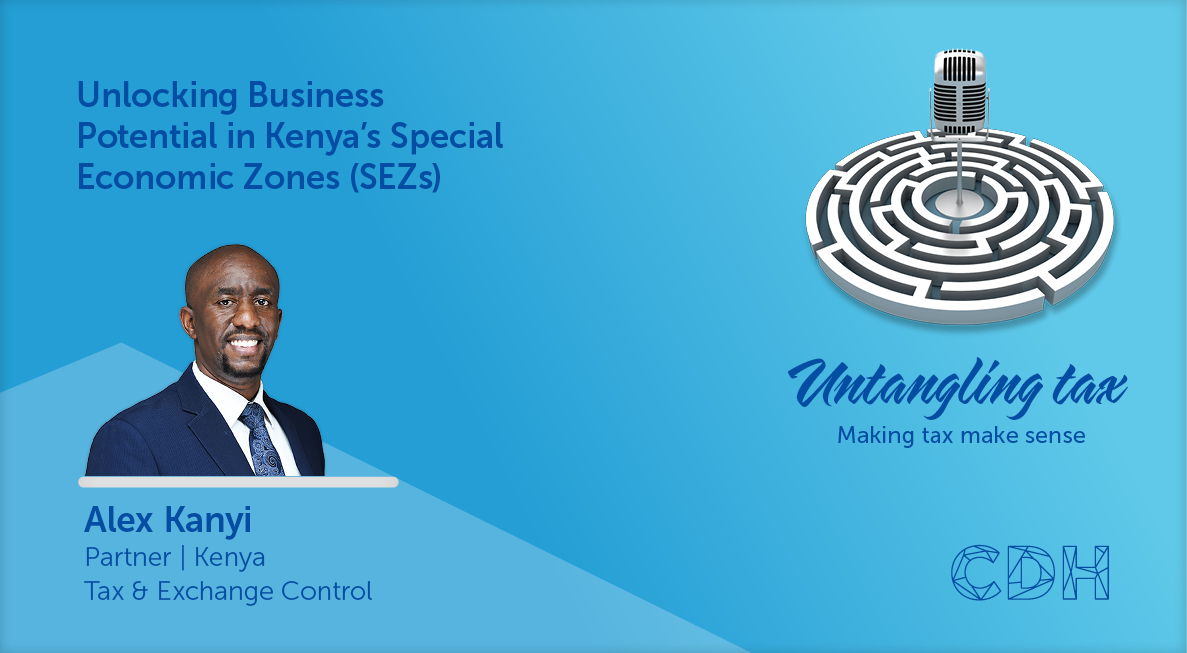Making sense of beneficial ownership thresholds: The FIC Act versus the Companies Act
At a glance
- Both the Financial Intelligence Centre Act 38 of 2001 and the Companies Act 71 of 2008 create legal regimes relating to the uncovering of beneficial ownership of an entity.
- Contrary to widely held misconceptions, neither act sets a percentage threshold of ownership or effective control for purposes of establishing whether a person would qualify as a beneficial owner of a company.
- Rather, references to percentage thresholds in relation to beneficial ownership are found in the various forms of guidance issued by the Financial Intelligence Centre and the Companies and Intellectual Property Commission.
Although the definitions of “beneficial owner” differ under each of these acts, broadly speaking, they are both concerned with a natural person who, directly or indirectly, ultimately owns or exercises effective control of a company and, in the case of the FIC Act, the natural person who has a “controlling ownership interest” in a legal person (see section 21B(2)(a)(i)). The terms “ownership” and “effective control” are not defined in either act, nor is “controlling ownership interest” defined in the FIC Act. Moreover, contrary to widely held misconceptions, neither act sets a percentage threshold of ownership or effective control for purposes of establishing whether a person would qualify as a beneficial owner of a company. Rather, references to percentage thresholds in relation to beneficial ownership are found in the various forms of guidance issued by the Financial Intelligence Centre (FIC) and CIPC. These have understandably created uncertainty in the market in relation to the supposed threshold for beneficial ownership, in particular under the Companies Act.
The FIC’s Public Compliance Communication 59
On 8 August 2024 the FIC released Public Compliance Communication 59 (PCC 59) relating to beneficial ownership and the application of section 21B of the FIC Act. For a detailed discussion of the content of the PCC 59, refer to CDH’s previous alert here. For present purposes, we will focus only on the references to a percentage threshold for determining beneficial ownership.
In the PCC 59, the FIC acknowledges that the term “controlling ownership interest” is not defined and then goes on to explain how this term should be interpreted, in the FIC’s view. While it is not decisive in all cases, the PCC 59 explains that:
“[T]he percentage of total ownership interest is a good indicator of controlling ownership over a legal person, as a person who holds sufficient percentage ownership interest in most cases exercises influence or control over a legal person and benefits from that legal person.”
The PCC 59 then goes on to state that the FIC is of the view that “holding 5% or more of ownership interest in a legal person is usually sufficient to exercise a controlling ownership interest in a legal person” and the FIC “strongly recommends” that persons holding 5% or more ownership interest in a legal person be identified by accountable institutions.
For those readers who recall a 25% threshold being relevant for beneficial ownership, your memory serves you correctly: this was the old guidance under Guidance Note 7 (paragraph 103) issued in terms of section 4(c) of the FIC Act read with section 28 of the Money Laundering and Terrorist Financing Control Regulations (MLTFC Regulations). It contained the threshold of 25% which was carried over from the original MLFTC Regulations to the FIC Act, which advocated for a “rules based approach” a long time before PCC 59 came into effect. It is worth noting that the issuance of guidance notes by the FIC in terms of the FIC Act is specifically authorised by the FIC Act itself. It remains unclear what, if any, the binding effect is of PCCs. What is clear is that in neither the guidance notes nor the PCCs can the FIC attribute powers to itself or to accountable institutions which broaden the FIC’s powers beyond the provisions of the FIC Act.
The PCC 59 then sets out certain factors which were taken into account in determining this 5% threshold, one of which is:
“Through alignment to other legislative requirements, including Regulation 32A to the Companies Act…which requires affected companies to establish and maintain a register of persons (both natural and juristic) who hold beneficial interest equal to or in excess of 5% of the total number of securities or class of that securities” (emphasis added).
As authority for this statement, the CIPC’s user guidelines on beneficial ownership published in August 2023 are referenced. We return to the concept of a beneficial interest below.
The CIPC’s guidance on beneficial ownership thresholds
In various guidance notes, step-by-step guides and user guidelines, the CIPC has maintained that beneficial holders of 5% or more must be disclosed to the CIPC by non-affected companies. The CIPC explains its reasoning for this position as follows in its step-by step guide on beneficial ownership: “Currently the Companies Act provides for 5% of beneficial interest in securities, thus the norm was upheld in terms of beneficial ownership” (emphasis added).
This rationale, although questionable, highlights an important distinction – the concept of holding a 5% beneficial interest is not the same as that of beneficial ownership. In terms of section 56(7) of the Companies Act and Regulation 32A of the Companies Regulations, an affected company (as defined) must establish and maintain a register of holders of beneficial interests equal to or in excess of 5% of the total number of securities of that class issued by the company. As for non-affected companies, certainly one of the ways in which one may be a “beneficial owner” is by holding a beneficial interest in a sufficient percentage of shares in the company (and in terms of the ordinary concept of “control”, this would presumably be over 50% as a rudimentary starting point) – so for instance someone who holds more than 50% of the voting rights under, say, a votes cession from the registered holder is, uncontroversially, a “beneficial owner”. That is a far cry, however, from saying that someone holding a 5% beneficial interest is a beneficial owner. It is also to be noted that “beneficial interest” is a slightly narrower concept than being a beneficial owner. In terms of section 1 of the Companies Act, a beneficial interest means, broadly speaking, the right or entitlement of a person to: (i) receive or participate in distributions; (ii) exercise or cause to be exercised, voting rights; or (iii) dispose or direct the disposition of securities. A common example would be a nominee relationship, where one person holds a share as nominee or agent or for the benefit of another, or a cession arrangement whereby a shareholder has ceded rights to a third party.
Two distinct concepts conflated
It appears that the 5% threshold imposed by the CIPC has its origins in the rules relating to beneficial interest holders, as opposed to beneficial owners. With respect, this is a conflation of two principles which is not supported by the text of the legislation.
This 5% threshold has now found its way into the FIC Act “beneficial owner” regime. It may seem from FIC’s PCC 59 that the Companies Act sets a 5% threshold for beneficial ownership, but to be clear this is not the case. In fairness, PCC 59 does specifically reference the beneficial interest regime in the Companies Act as is applicable to affected companies. For Companies Act “beneficial owner” purposes the enquiry is strictly whether a natural person “owns” or “effectively controls” a company, without reference to a percentage – leaving the question to be answered by the old platitude that each case is to be decided on its merits.
The information and material published on this website is provided for general purposes only and does not constitute legal advice. We make every effort to ensure that the content is updated regularly and to offer the most current and accurate information. Please consult one of our lawyers on any specific legal problem or matter. We accept no responsibility for any loss or damage, whether direct or consequential, which may arise from reliance on the information contained in these pages. Please refer to our full terms and conditions. Copyright © 2025 Cliffe Dekker Hofmeyr. All rights reserved. For permission to reproduce an article or publication, please contact us cliffedekkerhofmeyr@cdhlegal.com.
Subscribe
We support our clients’ strategic and operational needs by offering innovative, integrated and high quality thought leadership. To stay up to date on the latest legal developments that may potentially impact your business, subscribe to our alerts, seminar and webinar invitations.
Subscribe




